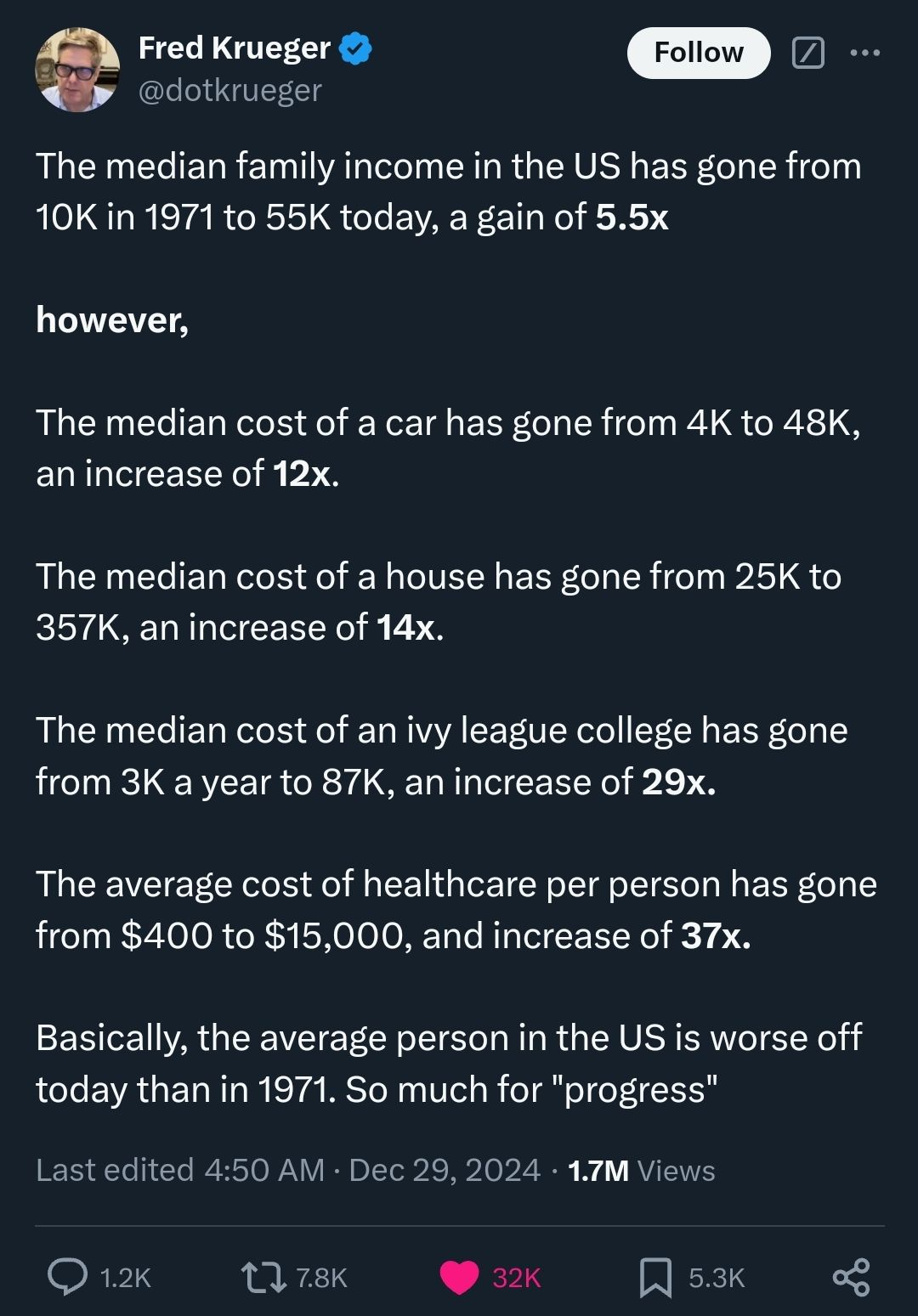this post was submitted on 30 Dec 2024
1499 points (98.8% liked)
Microblog Memes
6144 readers
1862 users here now
A place to share screenshots of Microblog posts, whether from Mastodon, tumblr, ~~Twitter~~ X, KBin, Threads or elsewhere.
Created as an evolution of White People Twitter and other tweet-capture subreddits.
Rules:
- Please put at least one word relevant to the post in the post title.
- Be nice.
- No advertising, brand promotion or guerilla marketing.
- Posters are encouraged to link to the toot or tweet etc in the description of posts.
Related communities:
founded 2 years ago
MODERATORS
you are viewing a single comment's thread
view the rest of the comments
view the rest of the comments

There's another important part of this equation: these are the things being sold. If someone can't afford any car at all, they still wouldn't show up in the entry-level car stats. But I think with how car-centric the US is, there won't be many people going carless? But like you said, if the second hand market is good, everyone could be driving a barely used BMW and they still wouldn't show up in any stats about new cars.
Basically, the only thing these stats tell us is that some people would have to spend a higher proportion of their income if they want to buy these things new. It doesn't tell us if that means they don't buy it, they buy it and go hungry, they buy an alternative, or they buy it without issue (because some other expense is cheaper or disappeared).
Inflation calculations try to account for this by considering a mix of products and services. If everything goes up across the board, people will get in trouble no matter their exact spending habits. You could also look at buying power or discretionary income to see if a population is doing alright.
The prices above increased a little harder than inflation, so you'd expect to see that as a decrease in discretionary income. The same would happen if wages didn't keep up with inflation, which is a happy coincidence? Or exactly what the discretionary income stat is designed to do: show how much financial breathing room people have.